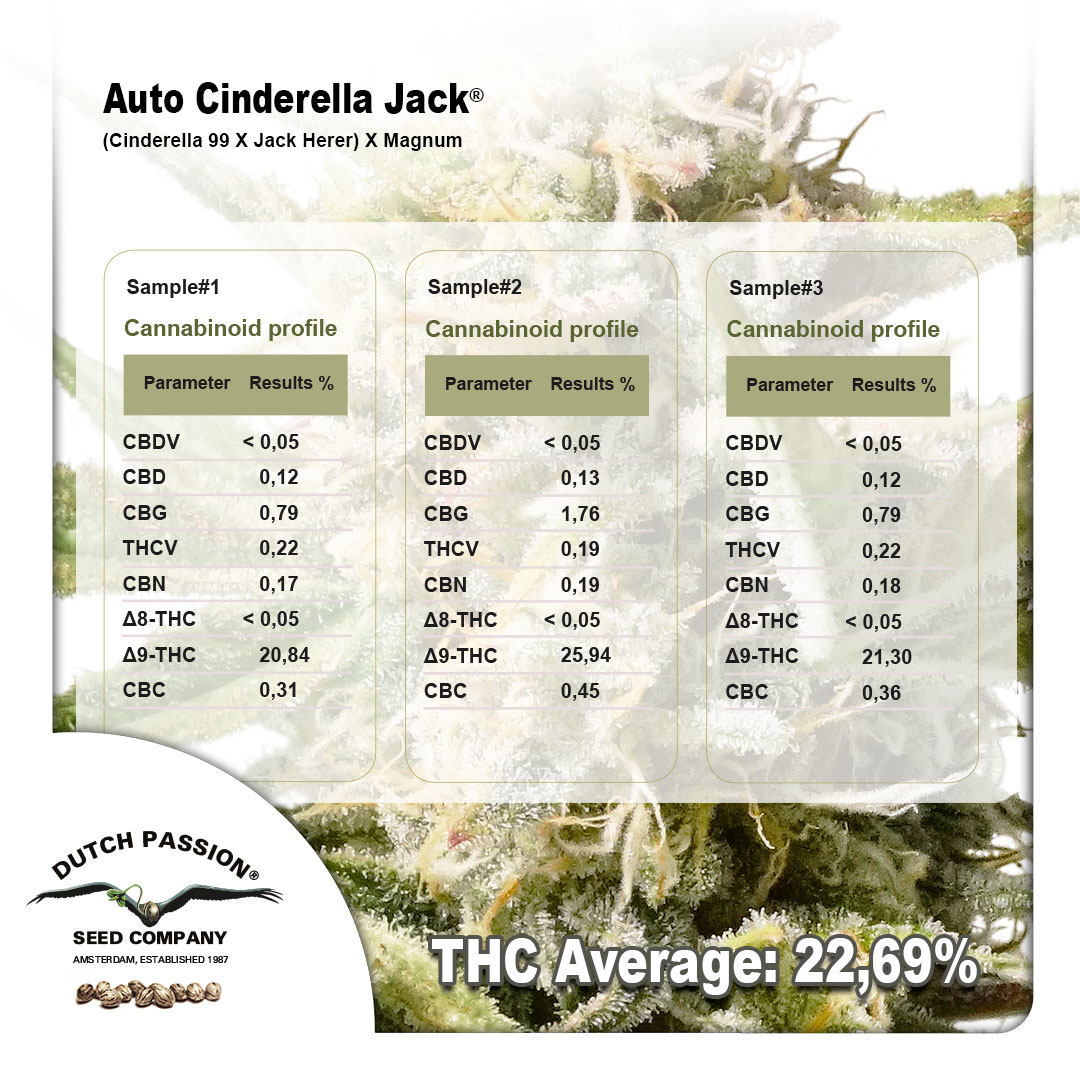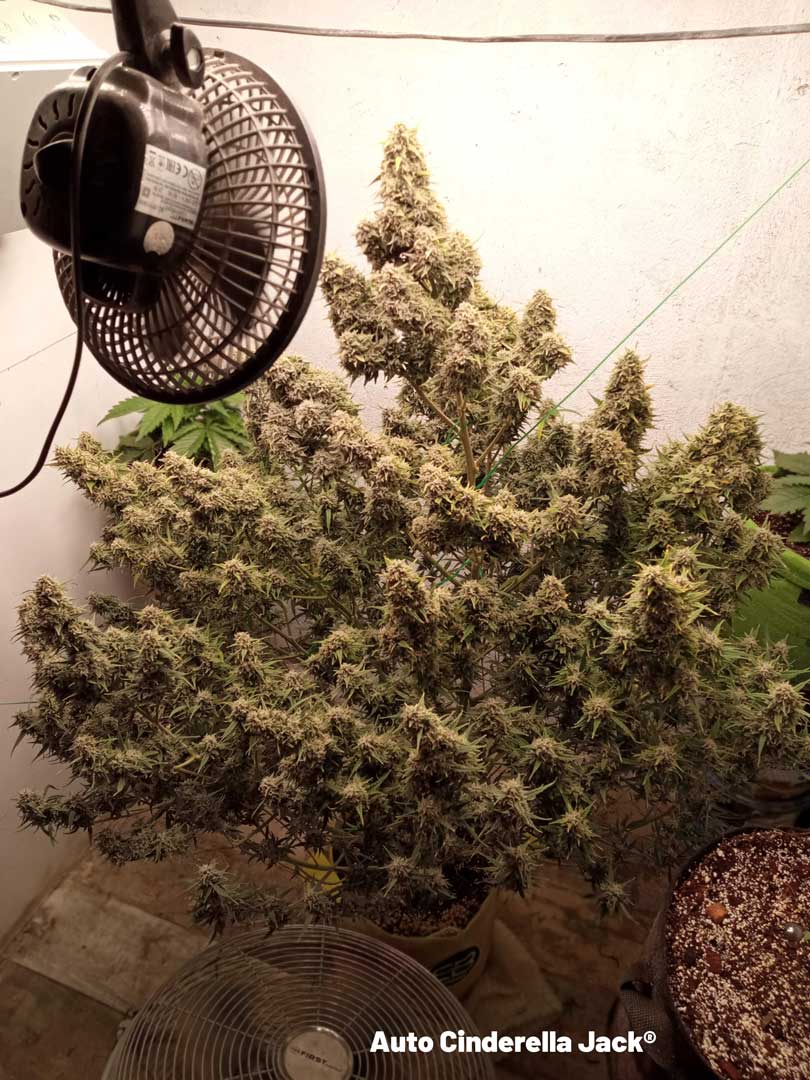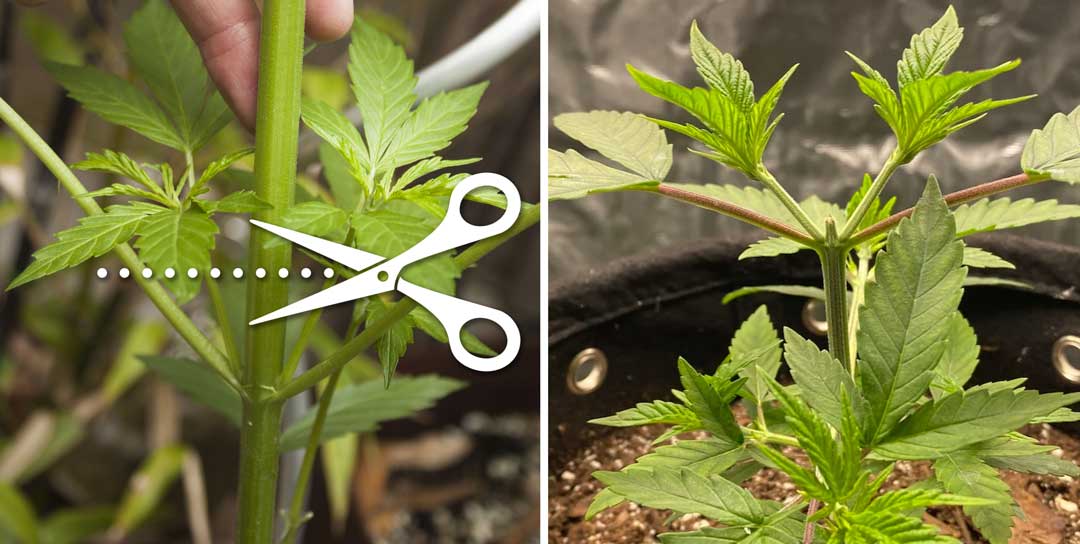Autoflower cannabis seeds myth-busting

Following their mainstream introduction over a decade ago, first-generation autoflower seeds met with a mixed reception. Early auto breeding techniques were not fully optimised, producing strains with medium quality and yields. In the following years the best cannabis geneticists have been able to dramatically improve results.
In recent years Dutch Passion have seen autoflower seeds produce plants with the highest independently recorded terpene levels (>1.6% terpenes in cured Auto Forbidden Cherry buds) and several strains that have regularly exceeded 25% THC. Below, we bust a few myths about autoflower seeds and explain how far auto genetics have evolved in just a few years.
Autoflowering cannabis strains are less potent

This may have been true with the very first-generation autoflowering cannabis seeds, but the best modern autoflower strains are comfortably on a par with the best feminised strains. Average THC levels in modern cannabis are around 15% according to official Dutch Government data created by analysing cannabis samples bought in coffee shops.
Cannabis strains that can reach around 20% THC are considered strong by most users. Seeing independent lab analysis of strains with over 25% THC is relatively rare, requiring the best cannabis seeds to be grown in optimised conditions.

If you want to shoot for maximum THC then check out Auto Skywalker Haze & Auto Cinderella Jack. Both have been independently measured in excess of 25% THC and represent some of the most potent genetics in the entire Dutch Passion catalogue. The strongest Dutch Passion strains are conveniently assembled in the High THC Cannabis Seed collection. Autoflower seeds account for around half of these elite strains.
Autoflower cannabis seeds produce lower yields
.jpg)
If you buy autoflower seeds from some of the second or third-tier seed suppliers, you can expect medium sized yields alongside average potency. But the most sophisticated auto breeding techniques coupled with professional genetic selection has allowed many autoflower strains to reach genuine XXL yields.
With 20 hours of daily light from autoflower seed to harvest, auto strains are able to bathe in intense light allowing bud/resin production to go into overdrive. Grow in large, aerated containers of soil or coco and you can expect rapid growth. Cannabis hydroponics will allow autoflower seeds to develop with explosive growth.
The best advice for any grower aiming to maximise their quality & yields is to aim to keep their autoflowers in the nutrient and optical sweet spot from autoflower seed to harvest. For expert growers this will be routine, but for the rest of us slow-release organic nutrients such as those from BioTabs will greatly simplify matters. Using powerful LED grow lights, and supplemental UVA/UVB is recommended to those aiming for epic results.
All Dutch Passion autoflower seeds have the potential to produce plants which can yield several hundred grams of dry buds indoors. But Auto Ultimate is especially recommended for those wanting to grow a single plant which can fill a tent. When buying autoflower seeds, it really pays to research your seedbank options carefully.
| Related: |
| Auto Ultimate indoor grow review with insane 1Kg dry harvest |
Autoflower cannabis buds are tasteless
.jpg)
Taste and flavour come from cannabis terpenes. In the dry and cured buds, terpenes are typically present at levels around 0.5%. High-grade buds with a real pungency can have around 1% terpenes in the buds. It’s rare to see terpenes above 1.5%, but incredibly Auto Forbidden Cherry has produced buds with 1.6% terpenes.
Anyone who still thinks autoflower buds are tasteless should try growing some high quality autoflower seeds from one of the top-tier seed companies. But do your research carefully, there are still numerous seed suppliers that buy and sell mediocre quality autoflower genetics.
Autoflower cannabis plants need 24 hours of light
One great feature of autoflower seeds is that they will grow under whichever autoflower light cycle that you provide. Some grow their autoflower seeds under permanent light (24/0 cycle) from seed to harvest. Most geneticists feel that an 18/6 or 20/4 cannabis light cycle is preferred. But outdoor growers get great results no matter how many daily light hours are supplied. Some people even grow some autos under a 12/12 light cycle alongside photoperiod cannabis strains if circumstances require.
Autoflower cannabis plants don’t need any care

Whilst it’s true to say that autoflower seeds are the easiest and fastest to grow, it might be going a little too far too far to say that they don’t need any care at all. The full genetic potential locked within your autoflower seeds is reached only when the grow conditions are optimised. Grow them in poor quality soil with insufficient light in cool conditions and you will get disappointing results - as you would if you were growing feminised cannabis seeds in poor conditions.
But if you can establish solid grow conditions, large, aerated containers (air pots & felt sacks work great) with sufficient nutrients and quality LED grow lights then it is fair to expect a relatively easy grow. You won’t even need to change the light cycle!
Outdoor cannabis growers that put the necessary time into preparing their grow location, soil etc will find that up-front effort will result in an easier grow often with enhanced yields and plant vigour.
Autoflowers cannot be transplanted
It’s a myth that autoflowers can’t be transplanted (moved from one container to a slightly larger one). The origins of the confusion may lay in the fact that a mishandled transplanting can stunt the auto for a few days as it recovers from the shock. Even longer if the root ball partially disintegrated during transplantation.
With a time-limited life cycle of around 75 days any time lost time from a stressful transplant will inevitably reduce plant size and eventual yield. For less-experienced growers, it remains good advice to germinate the autoflowering cannabis seeds in the final containers in which they will be bloomed.
That said, many experienced growers do transplant their autoflowers under well controlled conditions but usually no more than once or twice.
The key to a successful transplant is to:
• Start your seeds into pots of at least 1 or 2 liters.
• Transplant your autoflower no later than 1 or 2 week(s) after germination.
• Manipulate your seedling carefully in order not to damage the root.
• Ensure the grow medium in the new container is at a similar temperature - you don’t want to stress your plant with cold grow medium.
• Dig a hole deep enough to let the main taproot point downwards.
• Use of mycorrhizal fungi such as Mycotrex from BioTabs in the new grow medium can help new roots establish quickly.
• Support the root ball well and under all circumstances avoid losing clumps of root mass during the transplanting process. This will really stress the plant, stunting growth.
• Use of hygrometers, which measure soil moisture levels, may be useful to soil growers seeking consistent transplant techniques which will ensure no root damage when removing the cannabis plant from its container.
Many auto growers prefer a minimum container size of 15-20 litres (3-4 gallons) to ensure good final plant sizes. A deeper dive into cannabis transplanting may be useful reading to those keen to know some expert tips.
| Related: |
| Cannabis transplanting. When and how to pot up |
Autoflowers must never be topped

Many autoflower growers have never topped an auto (removed the growing tip to produce a bushier, shorter plant). Topping is considered a high stress training (HST) technique, it offers some benefits when done well. But HST is also fraught with dangers, especially for the less experienced cultivator.
The concern about topping autos is that the time-limited autoflowering cannabis genetics may not have the time to fully recover, perhaps resulting in final yield compromises. But many experienced autoflower growers disagree, arguing that if the topping process is done cleanly then the resulting heavily branched auto can offer substantial yield increases.
However, it’s important to add that the grow conditions need to be optimised as much as possible to allow the topped autoflower to grow with the necessary vigour. So perhaps topping autoflowers is something best left to the more experienced grower to consider. Less experienced growers can happily leave their autoflowers un-topped, allowing them to grow in the natural way.
| Related: |
| Topping autoflowers to increase yield. Good idea or bad? |
Autoflower cannabis seeds can be grown outdoors all year long

Growers in the tropics will be able to grow autoflowers all year round, with permanently mild/hot temperatures. Daylight hours never vary too far from 12/12 light conditions. But with just 12 hours of daily light the yields won’t be as high as those that could be achieved indoors with a 20/4 cannabis light cycle.
The further from the equator you live, the more you will notice seasonal changes. Once you reach climates with cooler seasons it becomes less and less realistic to expect to grow autoflower seeds outdoors all year round.
Growers in many European latitudes will be able to get one or two successive auto crops per year. Especially if they are able to give their plants a couple of weeks of indoor growth before planting them outside, or if they have a greenhouse/polytunnel. Growers at Southern European latitudes may be able to get 3 successive autoflower crops per year.
| Related: |
| Top-10 tips for growing autoflower seeds outdoors |





























wijsneus
2023-08-19 09:56:02
Besten, U maakt 1 denkfoutje. Als je een mooie kluit hebt zal het verpotten van een plant geen stress opleveren. Hoewel je dat niet in de zon moet doen. Maar daar zit nou net het probleem bij de autoflowers. Om die mooie kluit(je) te krijgen zitten ze een paar dagen "opgesloten" in het kleine potje terwijl dirct in volle grond of grote pot de wortels dus sneller weelderig uit kunnen groeien. En dat betekend altijd een sterker plant. En omdat dezen maar 75 dagen nodig hebben is die paar dagen al vrij lang.
Zarrix
2023-08-18 15:42:54
Dank u voor de info??